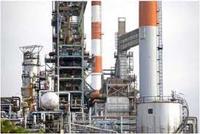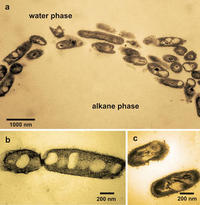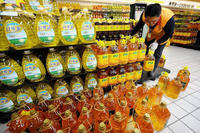-
Conflicting readings of possible chemical weapons use in Syria
Rebel sources say the number of dead in a Syrian army chemical weapons attack, which targeted a dozen villages in a rebel-held area east of Damascus, is between 750 and 1,300. They say it is not possible to offer precise numbers because some areas are not yet accessible. The Syrian government strongly rejected the allegations about chemical weapons use by the Syrian army. The Israeli defense minister, in the first official Israeli reaction, confirms the Syrian military used chemical weapons. Chemical weapons experts say there are two other possibilities: the Syrian regime may have used crowd-dispersal chemicals in higher-than-usual concentration, causing death among people trapped in bunkers and shelters; or the army may have used fuel-air bombs in bombing Sunny residential areas. Such bombs, also called thermobaric explosives, rely on oxygen from the surrounding air, unlike most conventional explosives which consist of a fuel-oxidizer premix.
-
-
Well water contaminants highest near natural gas drilling: study
A new study of 100 private water wells in and near the Barnett Shale showed elevated levels of potential contaminants such as arsenic and selenium closest to natural gas extraction sites. Researchers believe the increased presence of metals could be due to a variety of factors including: industrial accidents such as faulty gas well casings; mechanical vibrations from natural gas drilling activity disturbing particles in neglected water well equipment; or the lowering of water tables through drought or the removal of water used for the hydraulic fracturing process. Any of these scenarios could release dangerous compounds into shallow groundwater.
-
-
Lawmakers, citing shortcomings, threaten funding for chemical plant safety program

Heads of three congressional panels urge DHS secretary Janet Napolitano to take to correct shortcomings in the Chemical Facilities Anti-Terrorism Standards (CFATS) program. “As the authorizers and appropriators of this program, we write to you to express serious reservations about continuing to extend CFATS funding without evidence of substantial programmatic improvement,” the three chairmen write in their letter to Napolitano. The lawmakers pointed to flaws in the program’s risk evaluation system, compliance hurdles, implementation delays, and the failure of the program to identify vulnerable facilities.
-
-
Russia: Syria rebels used sarin gas
Vitaly Churkin, Russia’s UN ambassador, announced at a UN news conference Tuesday that scientific analysis by Russian labs of a suspected chemical weapons attack in Syria on 19 March concluded the attack probably had been carried out by rebels using sarin nerve gas of “cottage industry” quality. He said the gas was delivered by a crudely made missile.
-
-
Oil-devouring microbe communities a mile deep in the Gulf

The Deepwater Horizon explosion on 20 April 2010, caused the largest marine oil spill in history, with several million barrels of crude oil released into the Gulf of Mexico over the course of three months. Soon after the spill began, a massive oil slick was visible from orbiting satellites, yet once the underwater gusher was sealed, obvious traces of the crude oil disappeared much sooner than nearly all observers predicted. Some of the oil evaporated; some was skimmed off. Microbes “ate” much of the oil as well.
-
-
Researchers highlight problem of legacy mercury in the environment

Researchers have published evidence that significant reductions in mercury emissions will be necessary just to stabilize current levels of the toxic element in the environment. So much mercury persists in surface reservoirs (soil, air, and water) from past pollution, going back thousands of years, that it will continue to persist in the ocean and accumulate in fish for decades to centuries, they report.
-
-
Rapid, on-site detection of illegal cooking oils

In recent years, illegal cooking oil incident in China caused serious food safety risks. Researchers have developed two rapid and convenient colorimetric detection methods of illegal cooking oils based on phase transfer technology.
-
-
New microfluidic chip useful in counterterrorism, water and food safety
A new process for making a three-dimensional microstructure that can be used in the analysis of cells could prove useful in counterterrorism measures and in water and food safety concerns. Researchers developed a new microfabrication technique to develop three-dimensional microfluidic devices in polymers. Microfluidics deals with the performance, control, and treatment of fluids that are constrained in some fashion.
-
-
U.S. confirms: Assad used chemical weapons against Syrian rebels, civilians
The Obama administration has informed Congress a few minutes ago that the U.S. intelligence community has determined that the Assad regime has used chemical weapons on several occasions against both rebel forces and Syrian civilians. The U.S. intelligence community says these attacks, each using small quantities of sarin gas, have killed about 150 Syrians.
-
-
France weighing military options after French lab confirms Syrian use of sarin gas
Laurent Fabius, France’s foreign minister, said yesterday (Tuesday) that samples taken from Syria and tested in France confirm that sarin gas has been used by the Assad regime in several attacks in March and April. The U.K. Foreign Office said that samples from Syrian victims tested in British labs also confirmed the use of sarin. A UN investigative panel released its report yesterday, saying its experts had “reasonable grounds” to suspect small-scale use of toxic chemicals. Fabius said that France was not ruling out a military strike on the place where the gas is being stored.
-
-
Quickly identifying chemical, biological warfare agents
For more than fifty years, researchers have been studying exactly how aspirin affects the human body. Despite thousands of publications on the topic, our understanding is still incomplete. Meanwhile, novel chemical and biological weapons have historically been mass produced within a year of discovery. Using current methods and technologies, researchers would require decades of study to gain a robust understanding of how new threat agents exert effects on human biological systems. DARPA wants to close this capability gap, which leaves U.S. forces vulnerable.
-
-
Pennsylvania emergency professionals receive WMD training
The Center for Domestic Preparedness (CDP) in Alabama hosted more than a hundred emergency professionals from the Pennsylvania South Central Mountains Regional Task Force’s Health and Medical Committee for in-depth response-to-WMD training.
-
-
U.S. sharply disputes UN official's claim that Syrian rebels used chemical weapons
The United States sharply challenged claims by a UN official – who is not a member of the UN investigative commission looking into to the possible use of chemical weapons in Syria – that the rebels, rather than the Assad regime, used sarin nerve gas near the city of Aleppo on 19 March. The UN investigative commission looking into the incident distanced itself from the official’s comments.
-
-
Ammonium nitrate fertilizers are inherently risky, but the benefits are many
The deadly explosion has brought the $10 billion U.S. fertilizer industry to the attention of the mainstream media, but the risks inherent in fertilizer production and storage are not a secret to people close to the industry. Ammonium nitrate may be dangerous, but its benefits cannot be ignored.
-
-
More than 10,000 pesticides approved by EPA without rigorous review
Congress allowed the Environmental Protection Agency (EPA) to use what is called “conditional registration” to approve pesticides deemed especially beneficial for food production – even before all the toxicity tests have been completed. Congress intended conditional registration to be used only sparingly, but the EPS has been using the loophole in a wholesale fashion to approve 65 percent – or more than 10,000 – of the 16,000 pesticides submitted to it for approval. The EPA cannot easily track the history of conditionally approved pesticides to determine whether required toxicity data was submitted, whether that caused a dangerous use of a pesticide to be cancelled, or whether the uses or restrictions should be modified based in such data.
-
- All
- Regional
- Water
- Biometrics
- Borders/Immig
- Business
- Cybersecurity
- Detection
- Disasters
- Government
- Infrastructure
- International
- Public health
- Public Safety
- Communication interoperabillity
- Emergency services
- Emergency medical services
- Fire
- First response
- IEDs
- Law Enforcement
- Law Enforcement Technology
- Military technology
- Nonlethal weapons
- Nuclear weapons
- Personal protection equipment
- Police
- Notification /alert systems
- Situational awareness
- Weapons systems
- Sci-Tech
- Sector Reports
- Surveillance
- Transportation
Advertising & Marketing: advertise@newswirepubs.com
Editorial: editor@newswirepubs.com
General: info@newswirepubs.com
2010-2011 © News Wire Publications, LLC News Wire Publications, LLC
220 Old Country Road | Suite 200 | Mineola | New York | 11501
Permissions and Policies
Editorial: editor@newswirepubs.com
General: info@newswirepubs.com
2010-2011 © News Wire Publications, LLC News Wire Publications, LLC
220 Old Country Road | Suite 200 | Mineola | New York | 11501
Permissions and Policies
